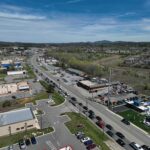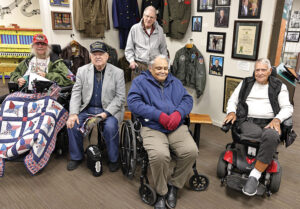
The pioneers who paved the way for Alabama stock car racing
Story by John Garrison Jr.
Submitted Photos
World War II had just ended, and America emerged victorious. The economic engine turned from war production to consumer production. People who, during wartime rationing of everything from rubber, gasoline, meat and butter, suddenly had plentiful supplies of everything.
American auto manufacturing had quit producing cars from 1943 to 1945 to support the war effort. American ingenuity, however, came alive after 1945. People felt good about America, and new inventions abounded and by that same year, Americans were saving on average 21percent of their earnings.
In a good economy, hard-working people like to enjoy some of the fruits of their labor with social activities, and many turned to sports events.
Couple all that with a re-emerged automobile industry, and the everyday American, blue-collar guy looked for ways to continue the good feeling that competition and another chance to win brought about.
Enter the thrilling stock car racing industry where an old family jalopy dragged from the barnyard would get a new lease on life as a racecar.
Imagine a group of guys coming together as a ragtag team to build a racecar. One might have mechanic’s skills, another as a body and fender/painter/welder type and yet another ex-soldier with courage enough to drive at breakneck speeds.
This is how a whole new enthusiasm for motorsports began in Alabama and across the nation. Despite automobile racing existing prior to this period, it was reserved primarily to a small population and cars built specifically for racing and not your typical old family coupe or sedan, thus the term “stock car.”
Around Birmingham, circa 1948, there was a track carved out of an old field near Roebuck called the lronbowl Speedway. The track was a dirt oval and on Sunday afternoons, crowds would gather to see the daredevil field of drivers and their home-built machines compete to be the first to the checkered flag. The hill above the track would be filled with wives, kids and neighbors with picnic baskets sitting on the hoods of their family cars taking in the spectacle. Everybody came home covered in dust.
As the early days of stock car racing in Alabama was forming, the fairgrounds at Birmingham had a 1-mile oval horse racing track built in 1906 that sometimes held an occasional motorcycle race or a car race of specially built open-wheel racecars.
During the same period as the old lronbowl Speedway, Birmingham Fairgrounds began running stock car races, as well. Then in 1958, NASCAR (National Association of Stock Car Auto Racing) brought sanctioned racing to Birmingham and other tracks in Alabama.
Stock car racing was being born from the crude beginnings of low-budget, homebuilt cars to a commercial industry that brought higher levels of engineering talent and corporate sponsor dollars emerging into the highly refined sport of stock car racing today. Racing was financially out of reach for the regular guy. The old days and ways were changing quickly.
There is still a group of traditionalists that have a love and devotion to the old days where it all began. Beginning days that produced such greats as Bobby and Donnie Allison, Red Farmer, still making racing appearances at 90 years old, and Neil Bonnet, who died racing stock cars in 1994 at 47 years old.
Although those became household names in the sport because of the entry into corporate racing, there were great racers that will forever have places in the hearts of the “purists” of the sport. People like Nero Stepto, Sonny Black, Fletcher Ford, Alton Jones, Fred Thompson, “Paddlefoot” Wales and those who went by aliases – drivers who changed their names so their employer wouldn’t fire them for engaging in such a dangerous sport.
There is an organization dedicated to the preservation of racing history in Alabama named the Alabama Auto Racing Pioneers (aarpinc.org) where hundreds of old photographs and stories abound on the history of racing here.
At the Talladega Motor Sports Hall of Fame, the Alabama Racing Pioneers room features photos and memorabilia from that bygone era.
Membership in the organization is only $35 a year to join. Current membership is 320 across the state and there are gatherings and banquets for those interested in preserving the history. l




















